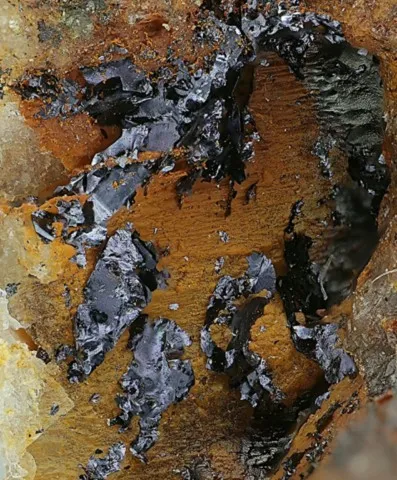UMANGITE
Class : Sulfides and sulfosalts
Subclass : Selenides
Crystal system : Tetragonal
Chemistry : Cu3Se2
Rarity : Very rare
Umangite is an extremely rare copper selenide found in hydrothermal deposits containing selenium, most often uranium veins. Its name comes from its discovery location : Sierra de Umango (Argentina). Umangite is a usually xenomorphic mineral forming only small grains, with a roughly rectangular outline, of a bluish-black to reddish tint fading to a dark iridescent purple. It is a potential source of selenium.
Main photo : Umangite from the Clara mine, Germany © Michael Förch
Umangite in the World
Twinning
Lamellar twinning is known.
Fakes and treatments
No fakes listed for this mineral species.
Hardness : 3
Density : 6.44 to 6.49
Fracture : Irregular to sub-conchoidal
Streak : Black
TP : Opaque
RI : -
Birefringence : -
Optical character : -
Pleochroism : None
Fluorescence : None
Solubility : Nitric acid
Magnetism : NoneRadioactivity : None

